

| Alfa Romeo |
| Lancia |
| Maserati |
| Chrysler (USA) |
| Magneti
Marelli (components) |
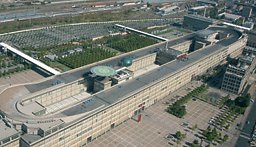
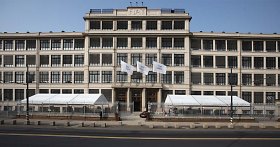
Main plants in Italy:
Mirafiori (Turin) - Alfa MiTo
Cassino (Frosinone) - Alfa Giulietta, Giulia
Melfi (Potenza) - Punto, 500X, Jeep Renegade
Giambattista Vico (Naples): Panda
Sevel val di Sangro: Ducato (JV with PSA)
Main plants overseas:
Betim-Minas Gerais (Brazil) - Palio, Punto, Linea, Idea, Bravo, Doblo, Uno.
Tychy (Poland) - 500, Lancia Ypsilon
Busa (Turkey) - Doblo, Linea, Aegea/Tipo
Changsa (China) (JV with GAC) - Viaggio
2019: 4,418,000 units
2018: 4,842,000 units
2017: 4,740,000 units
2016: 4,720,000 units
2015: 4,602,000 units
2014: 4,608,000 units
2013: 4,352,000 units
2012: 4,209,000 units (Fiat brand: approx. 1,880,000 units)
2011: 3,966,000 units
Fiat group sales (Fiat + Lancia + Alfa Romeo)*:
2010: 2,081,800 units
2009: 2,150,700 units
2008: 2,152,500 units
2007: 2,233,800 units
2006: 1,980,300 units
2005: 1,697,300 units
2004: 1,766,000 units
2003: 1,696,000 units
* Following the full merger with Chrysler, FCA no longer publishes global sales figures for its Italian brands.
Reference:
http://www.fcagroup.com/en-US/investor_relations/financial_information_reports/Pages/latest_financial_results.aspx
http://www.fcagroup.com/en-US/investor_relations/events_presentations/quarterly_results/Pages/default.aspx
FIAT itself used to be famous for building small cars, such as the original 500, Panda, Uno and Punto. Until the late 1980s, 3 out of every 4 cars on Italian roads were Fiats. The giant also controls nearly all Italian car brands existing today, i.e. Lancia, Alfa Romeo, Ferrari and Maserati. However, such a domination in its home market could no longer guarantee survival. Its Italian plants trail overseas plants for productivity and cost effectiveness. That is why its boss Sergio Marchionne determined to transform those plants to build luxury Maseratis, premium Alfa Romeos and niche Fiat 500-series cars. In other words, the Italian group is going upmarket.
Ferrari is no longer part of the group following its initial public offering in 2015. However, as it is still controlled by the Agnelli family and Piero Ferrari, its strong bonding with Fiat remains unchanged.
FIAT produced a variety of cars, no matter saloons, trucks, buses, sports cars or even Grand Prix cars (which brought some important victories). However, production volume remained small, and the numbers of employees actually exceeded the number of cars made per annum. In the late 1910s, Giovanni Agnelli, now its managing director, visited Henry Ford's factory in the USA and was deeply impressed. He decided to introduce American-style mass production to this company. The result was the huge Lingotto factory, which was not only the largest factory in Europe but is still remembered for having an oval test track on its roof. It immediately became the symbol of Italian industry. Production grew rapidly, leading to the construction of a second plant in Turin. Before the break out of WWII, FIAT employed 50,000 workers and remained to be a driving force to the economy of Italy.
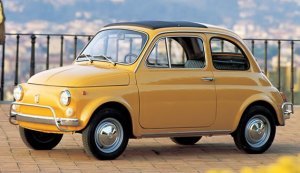 Fiat 500 (1957)
Fiat 500 (1957)Giovanni Agnelli firmly controlled the company until his death in 1945. His family still held a majority share but no member succeeded his position, therefore Vittorio Valletta became the chairman. After WWII, production resumed as the factory was rebuilt. Within a few years it introduced a string of successful economy cars, Nuova 500 and 600. During the magical decade between 1959 and 1969, its output rose from 425,000 to 1,751,400 cars.
Agnelli family resumed their leadership with Giovanni Agnelli II, the grandson of the founder, became the chairman in 1966. He used to be a playboy and loved driving sports cars. A horrible car accident changed his attitude dramatically.
In the 1970s, FIAT was hit by strikes and some unsuccessful product designs. Oil crisis would have helped it but by then the company had already expanded its product range to big cars and exotic cars such as FIAT 130 and the Ferrari-engined Dino. Furthermore, its reputation was damaged by the use of (rusty) Russian steel and quality control problems. Not only its sales suffered, it also had to pull out from the North America.
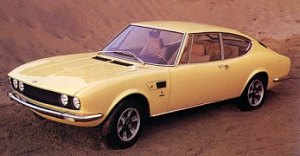 Fiat Dino (1966)
Fiat Dino (1966)However, other Italian car makers were even worse. FIAT absorbed Lancia in 1978 and took full control in Alfa Romeo in 1986. Earlier in 1969, it reached an agreement with Enzo Ferrari to take over 50% its stakes, letting Enzo to concentrate on motor racing without worrying the financial side. In 1993, De Tomaso sold 50% stakes of Maserati to FIAT. The remaining half was settled in 1997 when FIAT asked Ferrari to receive and run Maserati on behalf of itself.
In 1980s, new CEO Cesare Romiti turned around FIAT by introducing highly automated production lines and standardized components (e.g. FIRE engines and Type 4 platform). This won it reputation as the most efficient European car maker. Helped by the successful Panda and Uno (both were designed by Giorgetto Giugiaro), FIAT came back to prosperity quickly.
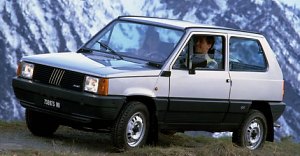 Fiat Panda (1980)
Fiat Panda (1980)In 1990s, there were moments of up and down. The ambitious Tipo and its derivatives did not result in expected success, so did the award-winning Brava / Bravo and the "world-car" Palio. However, Punto broke the sales record in Europe. More interesting was that it built niche models again - Barchetta, Coupe and Multipla, thanks to motivation by CEO Paolo Cantarella.
But the niche models could not save FIAT. To its new CEO Sergio Marchionne, it was increasingly obvious that FIAT could not fight against the Japanese and Korean invasions by itself. In 2000, it surprised the world by merging with GM. This allowed it to share engineering and production costs with Opel and created some joint projects, such as Grande Punto / Opel Corsa, Croma / Opel Vectra and shared powertrains. Meanwhile, FIAT ran into financial trouble as its new Punto II and Stilo did not sell well. A loss of 4 consecutive years led to its decision to force GM to take over it. Of course, GM refused to do so. It would rather paid compensations to dissolve the relationship. In 2005, Fiat and GM separated again.
Soon after that, FIAT returned to black thanks to the successful Grande Punto, new Panda and new 500. However, it continued to negotiate with others for merger and eventually resulted in taking control of Chrysler in 2009.